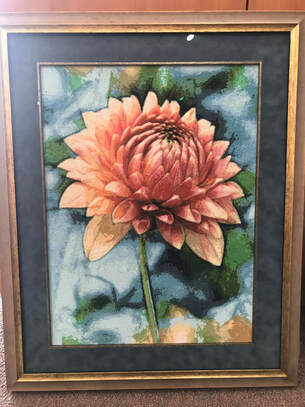Professional Needlework Framing
needlepoint • tapestry • embroidery • needle lace • tatting
You've put hours of hard work into your masterpiece, so why not protect it? Thread can easily become damaged or dirty, not to mention that a frame will add a professional touch that will make your work wall-worthy.



